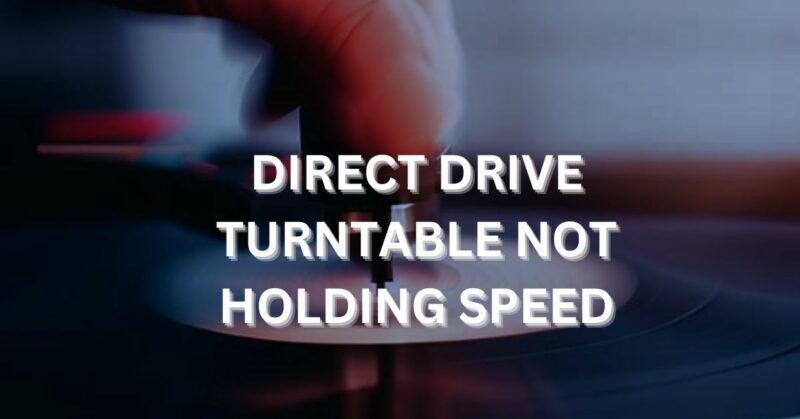Direct drive turntables have gained popularity among vinyl enthusiasts due to their precise speed control and reduced mechanical noise. However, like any mechanical device, they can sometimes experience issues with maintaining a consistent speed. In this article, we will explore common reasons why direct drive turntables may struggle to hold speed and provide practical solutions for troubleshooting these problems.
Belt Slippage
While direct drive turntables don’t use belts, some models have a belt-driven pitch control mechanism. If the belt is worn, loose, or damaged, it can cause speed fluctuations. To address this issue, carefully inspect the belt for signs of wear and replace it if necessary. Additionally, ensure that the belt is correctly tensioned to prevent slippage during operation.
Motor Issues
The motor is the heart of a direct drive turntable. If the motor is malfunctioning or worn out, it can result in speed irregularities. Check for any loose connections between the motor and the circuit board, and inspect the motor for signs of damage. If the motor is faulty, it may need to be replaced or repaired by a professional.
Power Supply Problems
Inadequate or unstable power supply can affect the speed stability of a direct drive turntable. Make sure your turntable is connected to a stable power source and avoid using power extension cords or outlets with other high-powered devices. If the power supply is the issue, consider using a dedicated power conditioner or regulator to ensure a consistent power flow.
Platter Alignment
The platter, the rotating platform on which the vinyl record rests, must be properly aligned for the turntable to maintain speed accuracy. Misalignment can cause speed fluctuations. Consult your turntable’s user manual or manufacturer’s guidelines to determine the correct alignment procedure. Adjust the platter according to the instructions provided, ensuring it sits securely and evenly on the spindle.
Tracking Force and Anti-Skate
Improper tracking force and anti-skate settings can impact the speed stability of a direct drive turntable. Check the manufacturer’s recommendations for the optimal tracking force and anti-skate settings for your cartridge and tonearm. Make adjustments as necessary to achieve the correct settings, as an incorrect balance can lead to speed variations.
Environmental Factors
Environmental conditions such as temperature, humidity, and vibrations can affect the speed of a turntable. Place your turntable on a stable surface away from sources of vibration, direct sunlight, and drafts. Extremes in temperature and humidity can also impact speed stability, so try to keep your listening room within a comfortable range.
Internal Circuitry
The internal electronic circuitry of a direct drive turntable can sometimes develop faults, leading to speed irregularities. In such cases, it is advisable to contact a qualified technician or the manufacturer for professional repair or servicing. Attempting to fix complex circuitry issues without expertise may result in further damage.
A direct drive turntable not holding speed can be frustrating for any vinyl enthusiast. However, by systematically troubleshooting potential issues like belt slippage, motor problems, power supply irregularities, platter alignment, tracking force, anti-skate, environmental factors, and internal circuitry, you can improve speed stability and enhance your overall listening experience. Remember to consult the manufacturer’s guidelines and, when necessary, seek professional assistance to address complex issues. Enjoy the timeless pleasure of vinyl with a direct drive turntable that maintains speed accuracy!

